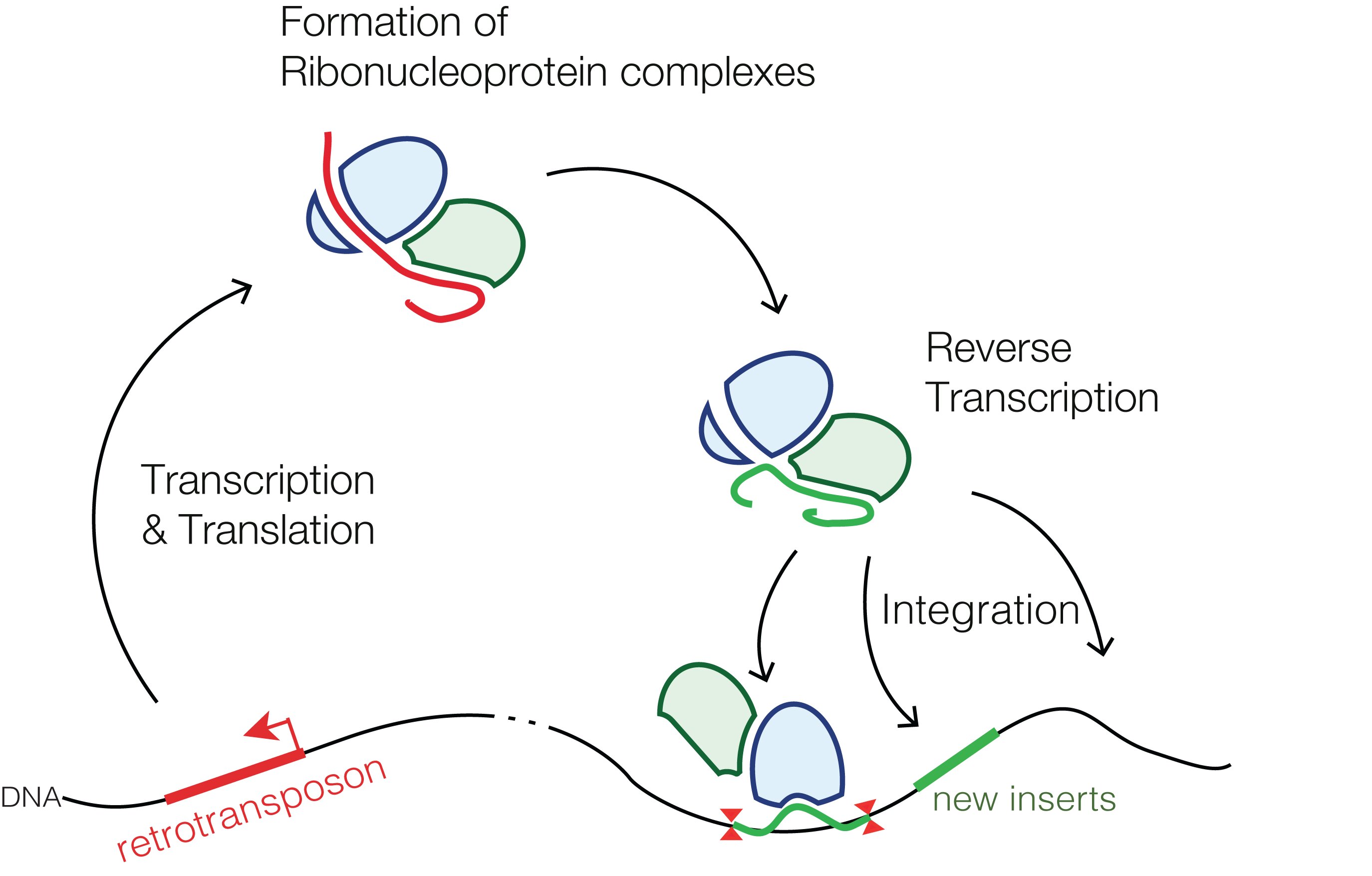
Retrotransposons are fascinating genetic elements that can copy and paste themselves within a genome. But what exactly are retrotransposons, and why are they important? These sequences of DNA can move around, creating genetic diversity and sometimes causing mutations. Found in almost all living organisms, they play a significant role in evolution and genetic variation. Retrotransposons can be classified into two main types: Long Terminal Repeat (LTR) and Non-LTR. Each type has unique features and mechanisms for transposition. Understanding retrotransposons helps scientists study genetic diseases, evolution, and even the development of new biotechnologies. Dive into these 26 intriguing facts to learn more about these genetic movers and shakers!
What Are Retrotransposons?
Retrotransposons are fascinating genetic elements that can copy and paste themselves into different locations within a genome. They play a significant role in the evolution and diversity of genomes. Here are some intriguing facts about these genetic elements.
-
Retrotransposons are also known as "jumping genes" because they can move around within the genome.
-
These elements use an RNA intermediate to transpose, meaning they first transcribe into RNA before being reverse-transcribed back into DNA.
-
Retrotransposons make up a large portion of many eukaryotic genomes. In humans, they account for nearly 42% of the genome.
-
There are two main types of retrotransposons: Long Terminal Repeat (LTR) retrotransposons and Non-Long Terminal Repeat (Non-LTR) retrotransposons.
How Do Retrotransposons Work?
Understanding the mechanics of retrotransposons can shed light on their impact on genetic diversity and evolution.
-
LTR retrotransposons have long terminal repeats at both ends, which are crucial for their replication and integration into the genome.
-
Non-LTR retrotransposons lack these terminal repeats but still manage to transpose using a different mechanism.
-
Retrotransposons encode an enzyme called reverse transcriptase, which converts RNA back into DNA.
-
Another enzyme, integrase, helps insert the newly synthesized DNA into a new location in the genome.
The Role of Retrotransposons in Evolution
Retrotransposons have significantly influenced the evolution of genomes across different species.
-
These elements can create genetic diversity by inserting themselves into new genomic locations, potentially disrupting or modifying genes.
-
Retrotransposons can also promote recombination events, leading to genetic variation.
-
Some retrotransposons have been co-opted by host genomes to serve beneficial functions, such as regulating gene expression.
-
In plants, retrotransposons have contributed to genome size expansion and the creation of new genes.
Retrotransposons and Human Health
Retrotransposons are not just relics of evolutionary history; they also have implications for human health.
-
Some retrotransposons are still active in the human genome and can cause mutations that lead to diseases.
-
Retrotransposons have been linked to various cancers, including colon and breast cancer.
-
These elements can also play a role in neurodegenerative diseases by disrupting normal gene function.
-
On the flip side, retrotransposons can sometimes protect against viruses by inserting themselves into viral genomes, rendering them inactive.
Retrotransposons in Research
Scientists use retrotransposons as tools to study genetics and evolution.
-
Retrotransposons serve as markers for studying genetic diversity and evolutionary relationships among species.
-
Researchers use these elements to understand gene regulation and the mechanisms of genome evolution.
-
Retrotransposons are also employed in gene therapy to deliver therapeutic genes to specific locations in the genome.
-
The study of retrotransposons has led to the discovery of new enzymes and biochemical pathways.
Fun Facts About Retrotransposons
Beyond their scientific importance, retrotransposons have some quirky and fun aspects.
-
The discovery of retrotransposons earned Barbara McClintock a Nobel Prize in Physiology or Medicine in 1983.
-
Some retrotransposons are named after mythical creatures, like the "Copia" element in fruit flies, named after the Roman goddess of abundance.
-
Retrotransposons can be found in almost all eukaryotic organisms, from yeast to humans.
-
These elements can sometimes create "genomic fossils," remnants of ancient transposition events preserved in the genome.
-
Retrotransposons have inspired the creation of synthetic biology tools, such as transposon-based gene delivery systems.
-
The study of retrotransposons continues to reveal new insights into the complexity and dynamism of genomes.
Retrotransposons: A Fascinating Genetic Element
Retrotransposons are more than just genetic oddities. These mobile DNA sequences play a crucial role in shaping genomes, driving evolution, and even influencing diseases. Their ability to copy and paste themselves within the genome can lead to genetic diversity but also potential mutations. Understanding retrotransposons helps scientists uncover the mysteries of genetic regulation and evolution.
From their discovery to their impact on human health, retrotransposons continue to be a hot topic in genetic research. They remind us that our DNA is not just a static blueprint but a dynamic, ever-changing entity. As research progresses, who knows what other secrets these genetic elements will reveal? Keep an eye on this field; it’s bound to bring more exciting discoveries in the future. Retrotransposons are a testament to the complexity and wonder of life at the molecular level.
Was this page helpful?
Our commitment to delivering trustworthy and engaging content is at the heart of what we do. Each fact on our site is contributed by real users like you, bringing a wealth of diverse insights and information. To ensure the highest standards of accuracy and reliability, our dedicated editors meticulously review each submission. This process guarantees that the facts we share are not only fascinating but also credible. Trust in our commitment to quality and authenticity as you explore and learn with us.
